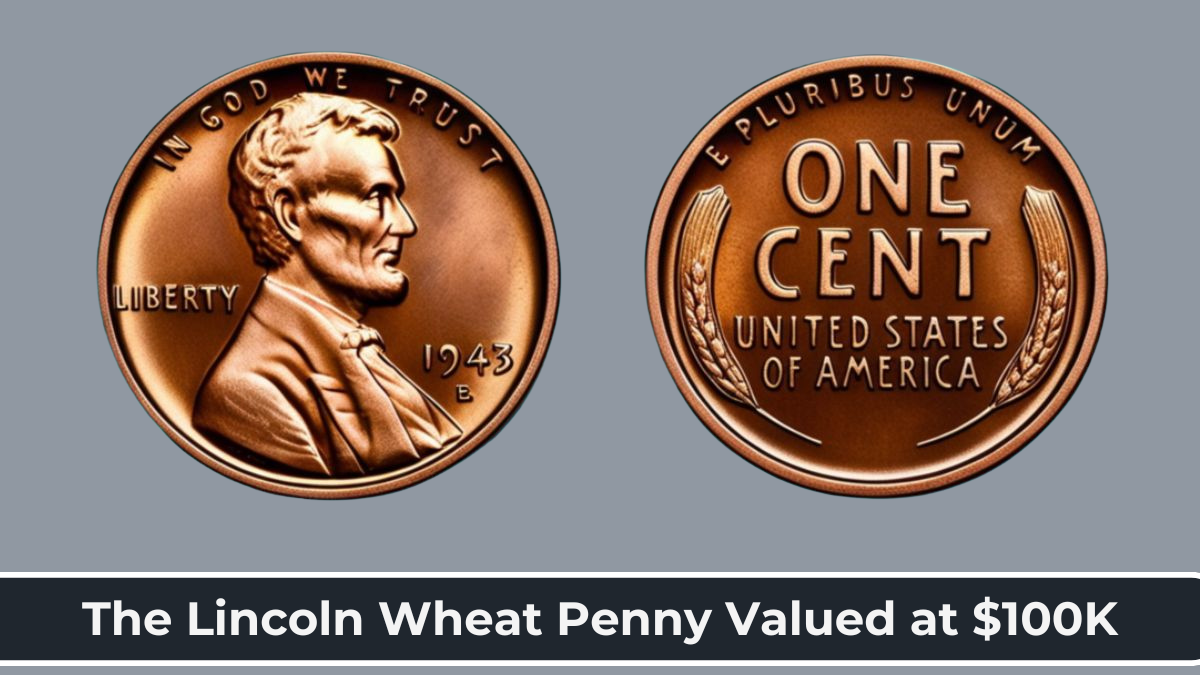The Lincoln Wheat Penny is more than just a one-cent coin—it’s a piece of American history. Introduced in 1909 to commemorate the 100th birthday of Abraham Lincoln, it was the first U.S. coin to feature a real historical figure rather than the symbolic Lady Liberty. Designed by Victor David Brenner, the penny’s obverse (front) featured Lincoln’s profile, while the reverse displayed two wheat stalks, symbolizing agricultural prosperity.
Though billions of Lincoln Wheat Pennies were minted between 1909 and 1958, certain rare variations can be worth up to $100,000 or more. Understanding what makes these coins so valuable can help collectors—and even everyday people—identify a potential fortune hiding in their spare change.
The Historical Significance of the Lincoln Wheat Penny
The Lincoln Wheat Penny marked a shift in American coinage by celebrating historical figures rather than allegorical representations of liberty. President Theodore Roosevelt championed the redesign, believing that U.S. coins should better reflect the nation’s values and history.
Brenner based his Lincoln portrait on a famous 1864 photograph by Mathew Brady, capturing the president’s thoughtful expression. Though his initials “VDB” were initially placed on the reverse, public backlash over their prominence led to their removal, making the 1909-S VDB penny one of the rarest and most valuable Lincoln cents.
Why Are Some Lincoln Wheat Pennies Worth $100,000?
While most Lincoln Wheat Pennies are only worth a few cents over face value, certain rare varieties can command tens of thousands—even hundreds of thousands—of dollars. Several factors contribute to their high value:
- Rare Mint Marks – Some pennies were minted in lower quantities, making them rarer.
- Minting Errors – Mistakes during production, such as double strikes or missing details, make certain pennies highly sought after.
- High-Grade Condition – Coins that have never been circulated or show minimal wear are significantly more valuable.
The Most Valuable Lincoln Wheat Pennies
The 1909-S VDB Penny: A Collector’s Dream
One of the most famous Lincoln Wheat Pennies is the 1909-S VDB.
- The “S” mint mark indicates it was minted in San Francisco.
- The initials “VDB” (Victor David Brenner) were later removed, making this early version extremely rare.
- Only 484,000 were minted, compared to over 27 million of the Philadelphia version.
A 1909-S VDB penny in uncirculated condition can sell for over $100,000, while even worn examples fetch thousands.
The 1943 Copper Penny: A $100,000+ Wartime Mistake
During World War II, the U.S. Mint switched from copper to zinc-coated steel for pennies to conserve copper for military supplies. However, a few copper planchets from 1942 were mistakenly used in 1943, creating one of the most valuable error coins in history.
- Only 20 to 40 genuine 1943 copper pennies are known to exist.
- Some have sold for over $250,000, with a top sale exceeding $1.7 million.
- Fake versions are common—a simple magnet test can confirm authenticity (real 1943 copper pennies will not stick to a magnet).
The 1955 Doubled Die Penny: A Striking Error
The 1955 Doubled Die Lincoln Wheat Penny is one of the most famous minting errors. Due to a misalignment during production, the date and inscriptions appear doubled, making it easy to identify.
- About 20,000 were released into circulation, often unnoticed by recipients.
- Uncirculated examples sell for over $100,000.
- Even well-worn versions can be worth several thousand dollars.
Other Valuable Lincoln Wheat Pennies
While the 1909-S VDB, 1943 Copper, and 1955 Doubled Die are among the most valuable, other rare dates and minting errors also fetch high prices.
| Coin | Estimated Value | Notable Feature |
|---|---|---|
| 1914-D | Up to $150,000 | Low mintage—only 1.1 million made. |
| 1922 “No D” Penny | Up to $90,000 | Denver Mint error—missing mint mark. |
| 1931-S | Up to $75,000 | Only 866,000 produced. |
| 1944 Steel Penny | Up to $125,000 | Accidental use of steel planchets instead of copper. |
How to Identify a Valuable Lincoln Wheat Penny
If you think you may have a valuable Lincoln Wheat Penny, follow these steps to check its authenticity:
- Examine the Date – Look for key years like 1909-S, 1914-D, 1922 “No D,” 1943 Copper, and 1955 Doubled Die.
- Check for Mint Marks – Mint marks appear below the date on the obverse. San Francisco (S) and Denver (D) pennies are generally rarer than Philadelphia (no mint mark).
- Look for Errors – Minting errors, such as doubled inscriptions, missing letters, or off-center strikes, can significantly increase value.
- Assess the Condition – Coins with minimal wear, strong details, and original luster are the most valuable.
- Use a Magnet Test – If you suspect you have a 1943 Copper Penny, check if it sticks to a magnet—if it does, it’s a steel penny and not a rare copper version.
What to Do If You Find a Rare Penny
If you believe you’ve discovered a valuable Lincoln Wheat Penny, take the following steps:
- Do NOT clean it! Cleaning can damage the coin and reduce its value.
- Store it properly – Use a coin holder or protective case to prevent scratches or corrosion.
- Get it authenticated – PCGS (Professional Coin Grading Service) and NGC (Numismatic Guaranty Company) provide professional verification and grading.
- Sell through reputable dealers – Auction houses like Heritage Auctions or trusted online marketplaces can help maximize your sale price.
The Thrill of Coin Collecting
Despite their rarity, valuable Lincoln Wheat Pennies still occasionally turn up in circulation. Many people unknowingly spend old pennies without realizing their worth, meaning these hidden treasures can still be found in pocket change, estate sales, or old collections.
Beyond their monetary value, Lincoln Wheat Pennies offer a tangible connection to American history. From their ties to Abraham Lincoln to their role in World War II, these coins serve as reminders of the past while sparking excitement among collectors today.
The next time you come across a Wheat Penny, take a closer look—you might be holding a $100,000 coin in your hands.
FAQs
A real 1943 Copper Penny will not stick to a magnet. If it does, it’s a steel penny from that year.
Only 484,000 were minted, making it extremely rare. The “VDB” initials were quickly removed from later versions.
Reputable coin dealers, auction houses (like Heritage Auctions), and online platforms are good places to sell.
Yes! While rare, valuable Wheat Pennies occasionally show up in pocket change or old coin rolls.
No! Cleaning a coin can reduce its value by damaging its surface.

